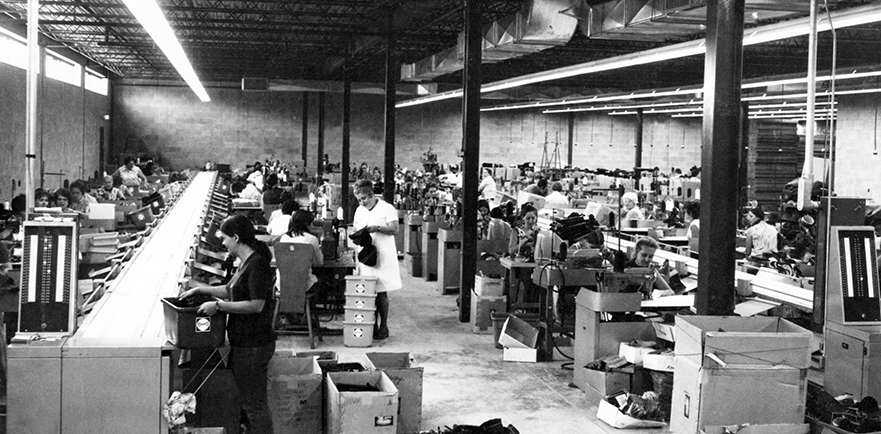The shoe’s journey
Let’s travel inside the factories now, so that we might understand how the assorted Contrecœur factories crafted their shoes. As you will notice, several words were invented or borrowed from English in order to identify the various manufacturing steps.
First, the process began with sizing, an operation performed by men. Next, the part went to the trimming stage (“fittage ” in French), during which women sewed the parts using sewing machines. The women received precise instructions regarding the shoe, its description and the type of thread to use. Once trimmed, the shoes were assembled.
Men worked on imposing, and occasionally dangerous, machines to shape the shoe. They placed the upper on the machine and sewed the heel onto it. The shoe was then inspected before being sent to packing (“paquetage”) and then to shipping (“shippage”). Obviously, this is only a brief summary of the work performed by the factories. To learn more, let’s listen to Marguerite Cormier, who walks us through the shoe’s journey.
The shoe’s journey (captions available in both FR and EN) – watch this video with the transcript (EN)



